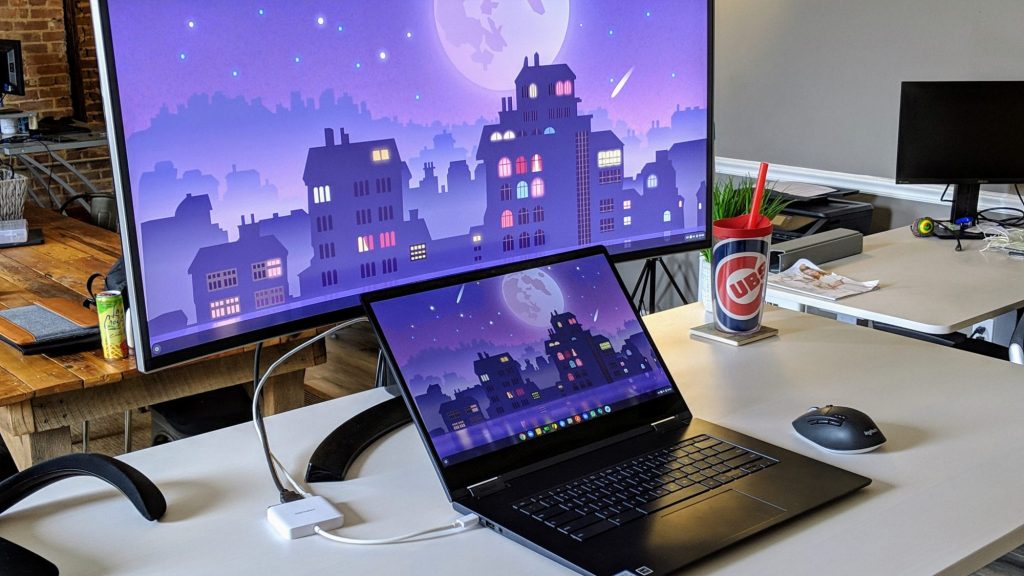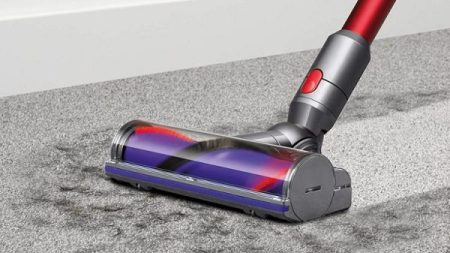With Chromecast, you can mirror your entire desktop directly to your TV at any time.
This feature is now integrated with Google Chrome, so unlike the early days of Chrome , you no longer need the Google Cast extension for this. However, you will still need to use Google Chrome. You can not use any other browser such as Mozilla Firefox or Microsoft Edge.
Cast a Chrome tab to the TV
You can use a Chromecast device to display a Chrome tab or the screen of your TV.
You can view most web content. Some plug-ins, such as Silverlight, QuickTime and VLC, do not work.
To view Chrome on your TV, you need a Chromecast device:
- A Chromecast, Chromecast Ultra or a TV with a built-in Chromecast.
- A computer and a Wi-Fi network with minimum system requirements.
- A current version of Google Chrome (version 72 or later).
- Update your Google Chrome browser if necessary.
- To connect your computer and your Chromecast to the same Wi-Fi network. Learn how to check the Wi-Fi network on your Chromecast.
Also Read: Zorable Adware Removal
Cast a tab from Chrome :
- Open Chrome on your computer.
- Click More More at the top right, and then click Cast.
- Select the Chromecast you want to view the content on.
- If you are already using your Chromecast, your content will replace the content on your TV.
- When done, click Cast on the right side of the address bar and then Stop Casting.
What you want to see in Chromecast
- When your tab is displayed on a TV, you will see the Display option.
- To the right of the address bar, next to your extensions, you see the Active Cast extension.
- To use a shortcut in Chrome, add the Cast button.
Videos and media
- Click Cast on the video or medium you are watching.
- You watch the video or pictures on the computer and the TV, but you only hear the sound on the TV. The sound from the other tabs and applications will continue to play on your computer.
Cast the Opera tab to the TV
- Click the Opera icon at the top left and select Settings.
- Scroll down to the User Interface section and check the Enable Chromecast support option.
- To start a page, just right-click on the open tab and select Start from the menu.
- Select the target device and you are ready to go.
Cast the Firefox tab to your TV
- Download the fx_cast extension. You may also need to download the Windows Bridge software from the same source.
- Select Next for installation.
- Now click the Add button to add the extension.
How to connect your Chromebook to an external monitor
Chromebooks are equipped with connectors that allow them to be connected to a computer monitor, TV, or other display. You can mirror your desktop on multiple monitors or use the extra monitors as separate desktops to save extra space.

You can also wirelessly mirror your entire Chromebook – or just a tab in your browser – to an external monitor. This external monitor only requires a Chromecast or other device that supports Google Cast.
To physically connect your Chromebook to an external monitor, use the plug that came with your Chromebook. Depending on your Chromebook, you may have one or more of the following contacts.
Connect an external monitor to your Chromebook
- Find the monitor input and output connectors on your Chromebook. They are probably on the right or left side. If you are not sure which contacts to use, read the manual that came with your Chromebook.
- Use these two connectors to find the correct adapter (for example, DisplayPort to HDMI). Most Chromebooks have HDMI connectors. You may need an HDMI adapter if your Chromebook is trying to connect to a monitor that has a non-HDMI connector. Some Chromebooks may have smaller micro or mini HDMI ports.
What Chromebook settings can you change?
- Mirror the screen by pressing the Ctrl and (or F4) keys. In this case, you can use the other screen as your “main” screen, but if you only use it as an extended desktop without a keyboard or mouse, you can keep the Chromebook screen as the main screen.
- Use the drop-down menus to rotate the image on your separate screen.
- Center your screen:
- Click Customize in the TV Adjustment section.
- Use the arrow and shift keys to move the display area until the screen is aligned.
- Show on multiple screens: Select the check box to enable “Unified desktop” mode. If you need to quickly switch from “mirror” mode to “expand” mode on your desktop, you can hold down the Ctrl key and press the full screen key (f4 on a traditional keyboard) to switch between modes.
If you use a Chromebox, you can find these customization options by typing chrome: //settings/display in the address bar.
Consider casting instead
If you do not have high-performance requirements and want to keep everything clean and wireless, you can also choose to use Google to pour the screen on a Chromecast or Android TV connected to the screen of your choice.
- Make sure your Chromebook and Chromecast TV or device are on the same Wi-Fi network.
- Click on the status area (where you see the Wi-Fi and battery icons).
- Click on the Cast icon, then you have the option to do a single casting for an open window or to do a casting for the entire screen.
This is great for displaying videos, photos or web pages on a large screen or even as a second screen to show you static information, but it does not work well if you have to type a lot or manipulate the screen content.






